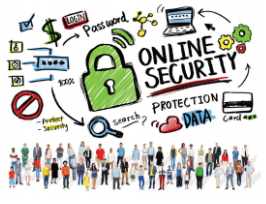Privacy and Security on the Internet
The Internet has already become a part of our daily life, and internet security is becoming difficult because scientists are developing more and more software each day. So to keep your personal information safe, the following tips can be your guide to surf the Internet safely.
TIP 1. Be Aware
Be smart on the Internet. Think of what you are sharing. You have to pay more attention if you are sharing your private information or even private information of others. Opening files, emails, pictures or even accepting private conversations from people you do not know can be dangerous. Plus, information on the internet may not be true or may be misleading. Make sure to look for secondary sources before counting them true.
TIP 2. Always Check for Website Safety
Think before you click. Provide private information only to valid and reputable businesses such as banks. One way to keep your data safe is to look for the ‘https’ and ‘padlock’ symbol to ensure that the website is safe. This action is very important if you are using a credit card or a debit card online for online purchasing.
TIP 3. Choose Strong and Varied Passwords
Strong passwords are important for Internet data safety. When you are setting a password you can mix letters, numbers and symbols up and change passwords regularly. The only disadvantage of this is that you may forget your password because it becomes too complex to remember. There are other options for safety. For instance, banks are using face detection or sound detection systems too. If available, use the on-screen keyboard in inputting your account and password because when you log in like this, it is difficult to hack the account.
TIP 4. Check for Keyloggers
A keylogger is a software program or computer hardware which records your keystrokes on a computer. Its most common use is in hacking passwords and getting credit card details. How to tell if a keylogger is installed? One way is to install an anti-virus programme that detects and reports any software like this on your computer. Secondly, if you are using public computers or a computer in a shop, you can view your Task Manager by hitting Ctrl+Alt+Del buttons at the same time. Then, you can see the list of programmes. You can detect the keylogger software this way.

